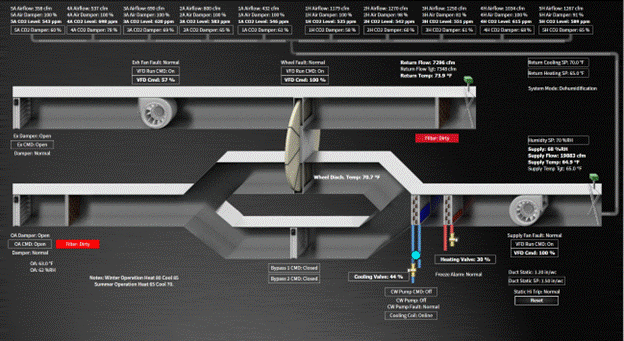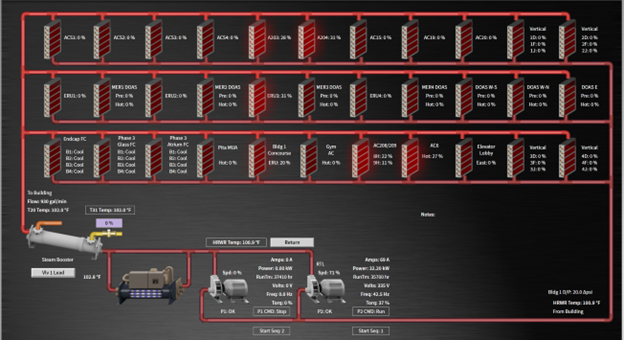Save on energy resources by utilizing a heat-recovery chiller or DX compressors
Running an air handler in “dehumidification” mode tends to be a resource hog. First, you are using a lot of chilled water to *squeeze* the ever-living-moisture out of the air, then you have to reheat it to make the air temperature comfortable. A double expenditure of energy: cooling and heating.
Automobiles have solved this very efficiently. Your car’s air conditioning does the squeeze with an air-conditioning compressor, but then uses waste heat (hot water diverted from the radiator) to bring the final air to a comfortable temperature. Sorry Tesla, no free heat for you, or soup for that matter. Your house, by the way, doesn’t have this feature. So if humidity bothers you at home, you will have to wear a sweater in the summer. In my house we do.
You can do the same thing in large buildings if you have a heat-recovery chiller. Setting up your system this way, you could save energy resources (and money) on the reheat part. Energy is dumped into the reheat loop instead of the cooling-tower loop. Free hot water and less heat dumped to the cooling towers which in and of itself will save energy costs.

Here is a typical energy-recovery air handler. To dehumidify, the air handler has to cool, then reheat. Not quite the “swish and flick” of Harry Potter, but the “squeeze and reheat” of getting moisture out of the supply air. This dehumidification is important for the air quality of a space, but this method uses quite a bit of energy.
If you don’t have a chiller plant, there is another option: direct-exchange (DX) compressors. The hot-gas recovery feature of this type of system allows for similar energy savings without a chiller. All the air is cooled, thus dehumidified. Then, some of this chilled air subsequently goes through a “hot deck” where high-side hot gas heats it, and is pumped back into the building. If it doesn’t go to a hot deck, it goes to the condenser coil, and is ultimately vented as wasted heat that could have otherwise been used. A modulating damper of some kind can be used to control how much reheat a particular zone gets. If there is no damper, the hot gas solenoid valve is regulated by the control system to either reheat (at 100%) or not (at 0%).

Here is the hot water one line, showing the heating effect of the chiller. Manual valves are not shown. The chiller is providing 100% of the hot water needed for the building during the summer months where the hot water load is less than in the winter.
Interested in taking advantage of this dehumidification process in your building? Reach out to the EES team!

